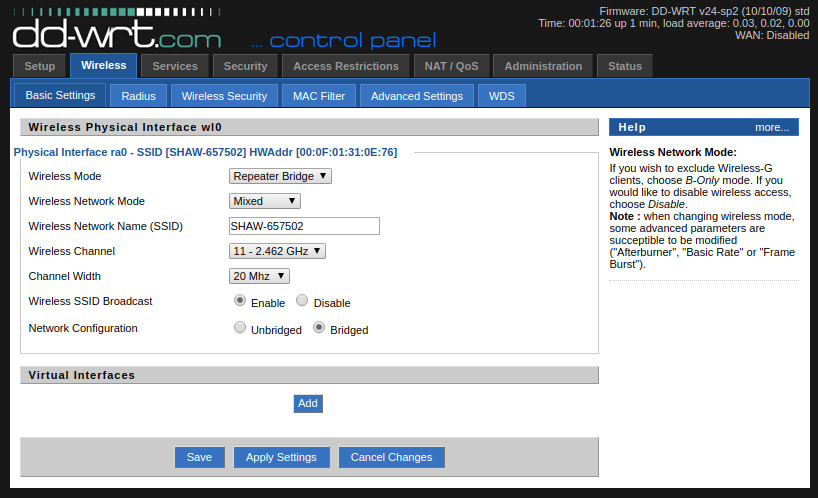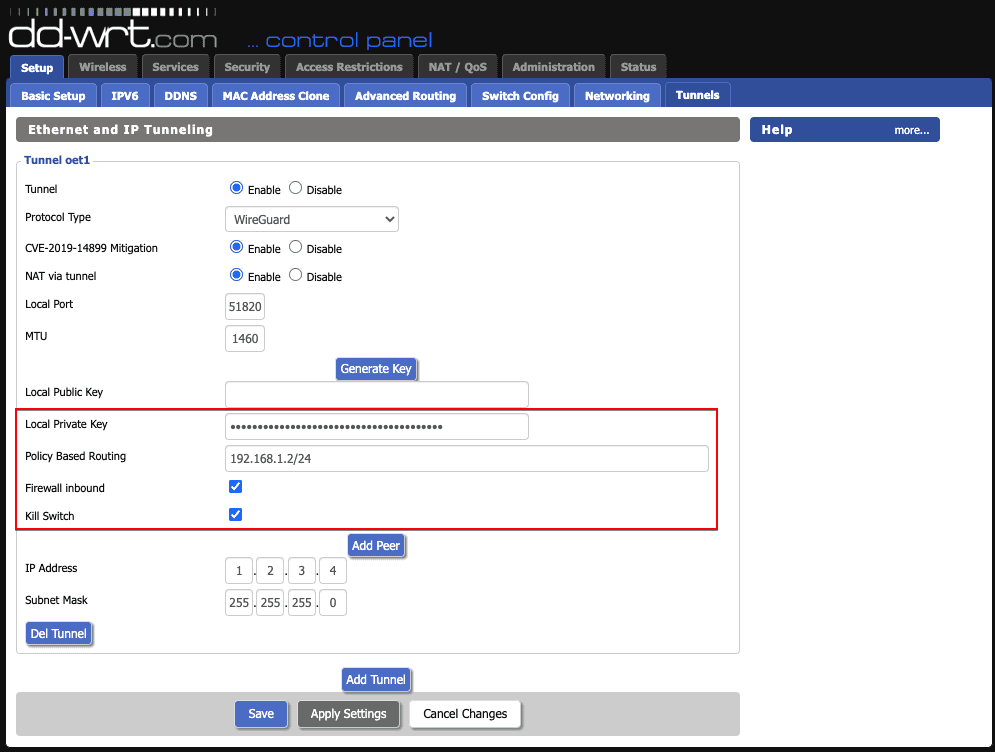

Step 2. Open a browser on your PC and connect to the DD-WRT router - its default address is. Click the “TCP/IP” tab and set “Configure IPv4” to Manually.Īs for Windows, enter the IP address 192.168.1.1, Subnet Mask 255.255.255.0, and Router 192.168.1.1.

In the Network Preferences pane, be sure that “Show” is set to Built-In Ethernet.
#DD WRT V24 NV60K MANUAL MAC OS#
On Mac OS X, click on Apple Menu/System Preferences/Network. Now click Use the Following IP Address and enter 192.168.1.2 as the IP, 255.255.255.0 as the Subnet Mask, and 192.168.1.1 as the Default Gateway. Scroll down to Internet Protocol (TCP/IP) and click Properties.
#DD WRT V24 NV60K MANUAL WINDOWS#
Step 1. To manually configure your IP address in Windows XP, click to Control Panel/Network Connections/Local Area Connection/Properties. We are going to disable its DHCP server, so you should manually configure an IP address for your temporary PC. Do not connect it to the WAN, sometimes labeled “Internet” port, which can remain empty.Īssuming your DD-WRT is set to factory defaults, its IP address is 192.168.1.1.

The easiest way is to grab a laptop computer, temporarily disable any wireless network it has, and connect it via Ethernet cable to one of the LAN ports on the secondary router. For temporary setup purposes, you need to connect a wired PC to the secondary router. Obviously, you can’t launch a web browser from your printer. You will need to access the administration interface of the secondary router, your DD-WRT router. Later, you’ll need to input these on the secondary router. If using WPA or WPA2, note your passphrase. If you are using WEP, note your passphrase and key length (64-bit, 128-bit, etc.). Take note of any wireless security currently enabled on your primary router. Without DHCP enabled, your bridged peripherals may not be able to get onto the network. This tutorial assumes that your primary router is, like most routers, assigning IP addresses by DHCP. The DD-WRT firmware with wireless bridge mode need only be installed on the secondary router you’re turning into a client adapter (we’ll call it the “client router”). Your primary router can be any brand of router – whatever you already have, for example. In wireless bridge mode, all devices connected to either router are contained within one happy unified subnet – as if they were all connected to a single router. In wireless client mode, devices connected to the secondary router are contained within their own subnet, separate from the subnet for devices connected to the primary router. In either mode, you have a primary router and a secondary router. Technically, the DD-WRT supports two methods of connecting a wired device (or devices) to a wireless network: wireless client mode and wireless bridge mode. Using the versatile Linksys WRT54G (or compatible) router with DD-WRT V23 or newer, let’s set up a wireless bridge that you can easily plug-and-play among any machines that need to hop online wirelessly – even a laptop without a wireless adapter of its own. That’s an option, but it won’t earn you any digital cred at LAN parties. You can buy one of these and be done with it. Some products, like the Xbox, support specialized wireless bridges specifically made for this purpose. Using the latest v23 firmware for DD-WRT, setting up a wireless bridge is a walk in the park. And that bridge can be a sub-$60 router with the open-source firmware DD-WRT, like the Linksys WRT54G and similar compatible routers. But even as networking expands its reach, wireless networking in non-PC electronics is further behind still.īut wait! You actually can connect a gadget with only an Ethernet port to a wireless network. Networking abilities are appearing in more non-traditional electronic devices, including some digital audio players, some digital cameras, printers, and specialized devices like the Xbox gaming consoles. Not too long ago, we were promised a world in which virtually every electronic gadget could connect to a network, talking to one another, exchanging data, joking and laughing and basically enjoying the fruits of an electronic utopia.


 0 kommentar(er)
0 kommentar(er)
